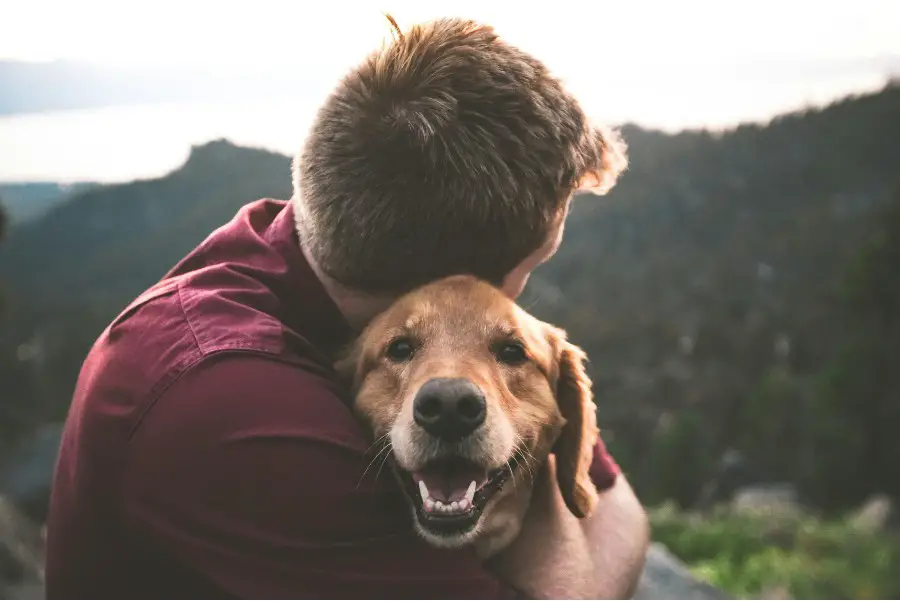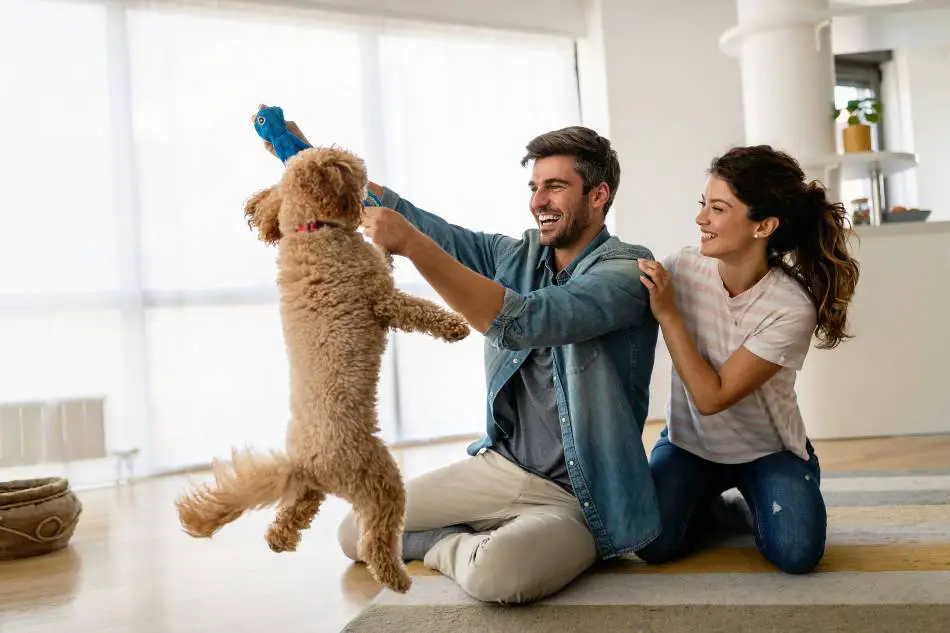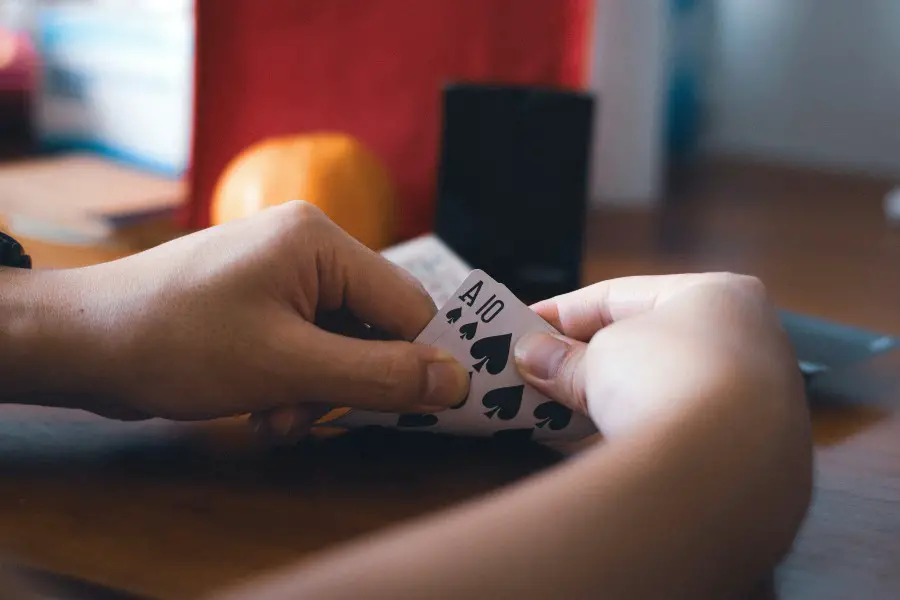Separation anxiety in dogs is a common issue that many pet owners face. It can be stressful for both the dog and the owner.
Dogs with separation anxiety may bark, whine, chew on furniture, or even have accidents in the house when left alone.
Understanding how to help your dog feel more comfortable when you are not around is important.
This article will talk about tips to reduce separation anxiety in dogs.
Key Takeaways
- Recognize the Signs: Dogs with separation anxiety may bark, whine, chew on furniture, or have accidents in the house when left alone, indicating their distress.
- Create a Safe Space: Establish a quiet, comfortable area with familiar items like blankets and toys to help your dog feel secure when you are not around.
- Establish a Routine: Consistent feeding times, walks, and playtime can provide stability and reduce your dog’s anxiety.
- Use Gradual Desensitization: Start with short absences and gradually increase the time away to help your dog get used to being alone without feeling anxious.
- Provide Mental Stimulation: Keep your dog engaged with puzzle toys, training sessions, and new tricks to reduce boredom and anxiety.
- Utilize Calming Aids: Products like calming collars, sprays, and anxiety wraps can help soothe your dog by mimicking comforting scents or applying gentle pressure.
- Seek Professional Help: If your dog’s anxiety is severe, consult a veterinarian or a professional dog trainer/behaviorist for expert advice and personalized support.
- Build Confidence: Use positive reinforcement, socialization, and encouraging independence to help your dog become more confident and less anxious when alone.
- Stay Calm and Patient: Reducing separation anxiety takes time; avoid punishment, celebrate small victories, and remain consistent in your efforts to help your dog feel more secure.
Separation Anxiety
Separation anxiety happens when a dog becomes very upset because they are separated from their owner. Dogs are social animals and they love being with their family. When left alone, some dogs feel scared and anxious, which can lead to unwanted behaviors.
Signs of Separation Anxiety
Recognizing the signs of separation anxiety is the first step in helping your dog. Some common signs include:
- Barking or howling when left alone
- Chewing on furniture or other items
- Scratching at doors or windows
- Having accidents in the house
- Pacing or restlessness
If your dog shows these signs only when you are not home, they might have separation anxiety. And these signs can help you take the right steps to make your dog feel better.
1. Creating a Safe Space
Creating a safe and comfortable space for your dog can help reduce their anxiety. This space should be a place where your dog feels secure and relaxed.
Choosing the Right Spot
Pick a quiet area in your home where your dog can feel safe. It could be a corner of a room or a cozy crate. Make sure the space is away from loud noises and busy areas. A quiet spot helps your dog feel less stressed and more at ease.
Making it Comfortable
Meanwhile, add your dog’s favorite blanket, toys, and maybe an item of your clothing that smells like you. The familiar scents and items can help your dog feel more at ease. A comfortable space with familiar items can make a big difference in how your dog feels when you are not around.
2. Establishing a Routine
Dogs thrive on routine. Having a set schedule can help your dog know what to expect and reduce their anxiety.
Regular Feeding Times
Feed your dog at the same times every day. So your dog knows when to expect meals and can make them feel more secure. A regular feeding schedule can give your dog a sense of stability and predictability.
Consistent Walks and Playtime
Take your dog for walks and play with them at the same times each day. The regular exercise can help burn off energy and reduce anxiety. Consistent walks and playtime can also strengthen your bond with your dog and make them feel more secure.
3. Gradual Desensitization
Gradual desensitization is a method where you slowly get your dog used to being alone. Therefore your dog will feel less anxious when you leave.
Start with Short Absences
Begin by leaving your dog alone for just a few minutes. Gradually increase the time you are away to help your dog learn that you will always come back. Starting with short absences can make the process less overwhelming for your dog.
Practice Leaving and Returning
Put on your shoes and grab your keys, then sit back down. Repeat this several times a day to help your dog get used to the signs that you are leaving without feeling anxious. Practicing leaving and returning can help your dog feel more comfortable with the idea of you being away.
4. Providing Mental Stimulation
Keeping your dog’s mind busy can also help reduce their anxiety. Bored dogs are more likely to become anxious.
Give your dog puzzle toys filled with treats. These toys keep your dog busy and make them work for their reward. Puzzle toys can provide mental stimulation and keep your dog occupied for longer periods.
Also, you can teach your dog new tricks or commands, which not only keeps their mind active but also strengthens your bond. Training sessions can be a fun and rewarding way to keep your dog engaged and mentally stimulated.
5. Using Calming Aids
There are several products available that can help calm your dog.
Calming collars and sprays release pheromones that can help soothe your dog. These products mimic the scent of a mother dog and can make your dog feel safe. Using calming aids can provide an extra layer of comfort for your dog.
Anxiety wraps, like the Thundershirt, can have a calming effect, similar to swaddling a baby. It applies gentle pressure to your dog’s body. The Anxiety wraps can be a helpful tool in reducing your dog’s anxiety.
6. Seeking Professional Help
If your dog’s anxiety is severe, it might be time to seek help from a professional.
Consulting a Veterinarian
A veterinarian can rule out any medical issues that might be causing your dog’s anxiety. They can also recommend medications if needed. Consulting a veterinarian can provide you with expert advice and guidance.
Working with a Dog Trainer or Behaviorist
A professional dog trainer or behaviorist can work with you and your dog to develop a plan to reduce anxiety. They can provide personalized advice and support. Working with a professional can help you address your dog’s anxiety more effectively.
7. Building Confidence
Helping your dog build confidence can reduce their anxiety. Confident dogs are less likely to feel scared when left alone.
Positive Reinforcement
Use positive reinforcement to reward your dog for good behavior because that can make your dog feels more confident. For example, use a happy and enthusiastic tone to praise your dog when they do something good.
You can say “Good boy!” or “Good girl!” when they follow a command or behave well. Or, pet your dog and give them a gentle pat or scratch behind the ears when they exhibit good behavior. Physical affection can be very rewarding for dogs.
Socialization
Expose your dog to different people, places, and experiences. Socialization can help your dog feel more comfortable in different situations.
Encouraging Independence
Encourage your dog to spend time alone even when you are at home. Give them a special toy or treat to enjoy in their safe space. Gradually increase the time they spend alone. Then they will learn that being alone is not a bad thing and can be enjoyable.
8. Staying Calm and Patient
Reducing separation anxiety takes time and patience. Stay calm and consistent with your efforts.
Avoid Punishment
Never punish your dog for behaviors related to anxiety as that can make the problem worse and damage your bond. Avoiding punishment can help you build a stronger and more trusting relationship with your dog.
Be Patient
Understand that progress may be slow. Celebrate small victories and keep working towards your goal. Patience is key to helping your dog overcome separation anxiety.














